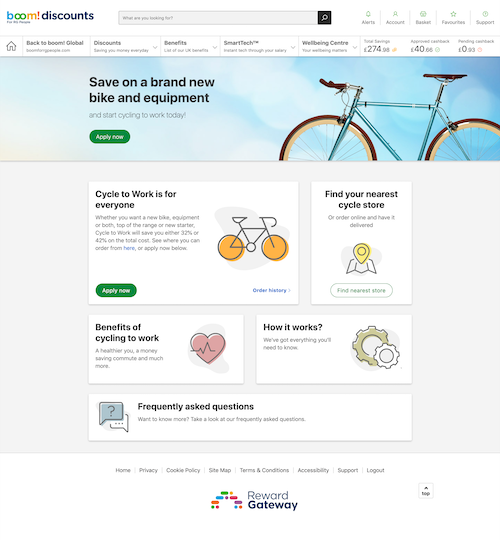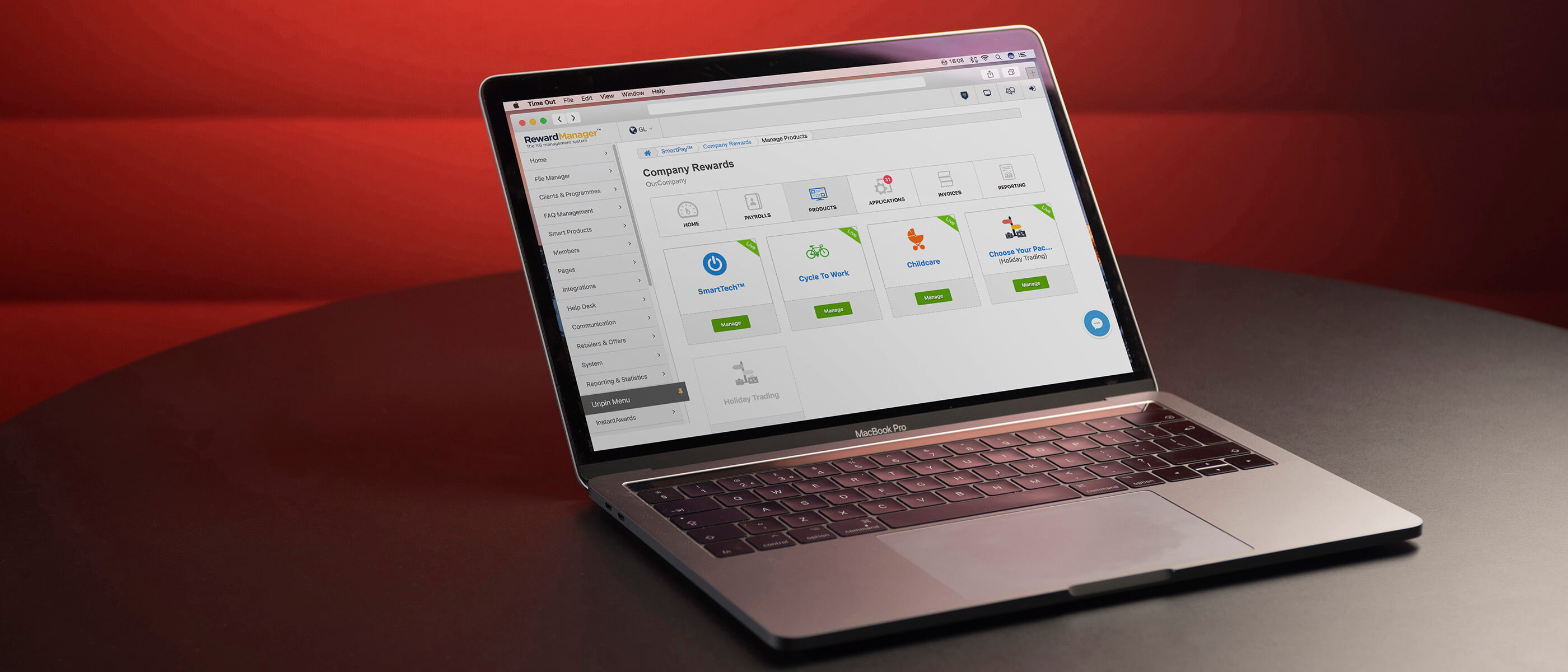Once considered a luxury, a Cycle to Work scheme is arguably one of the most important, and expected, benefits you can offer your workforce in 2024. Focus on the environment has never been greater, with employers under pressure to reduce their carbon footprint at the same time as employees look to cut down their spend on commuting amidst the cost of living crisis.
The workforce is also continuing to diversify with five generations now working alongside each other, and Generation Alpha arriving in 2026! Both support and expectation for a company to offer schemes such as Cycle to Work have grown due to the trend of ‘climate quitting’. In fact, 54% of millennials in the UK workforce have admitted they research a brand’s environmental impact and policies before accepting a job offer.
As Cycle to Work moves from a ‘nice-to-have’ to a 'must-have’, it’s worth considering introducing the programme to your company could not only boost your employees’ wellbeing and support your environmental efforts, but also save both you and your employees money on National Insurance contributions.
If you’re ready to start a Cycle to Work scheme in your business, it’s critical to find the right partner. At Reward Gateway, we put employee experience at the heart of our products, and make it as easy as possible for our clients to put a Cycle to Work programme in place and get their employees pedalling – and saving! – straight away.
Here are a few tips on how to set up a Cycle to Work scheme and what to look out for along the way!
Don’t forget user experience (ever!)
When implementing a Cycle to Work scheme, your employees' needs should always be at the forefront of your minds. At Reward Gateway, we conduct extensive user testing during the design process to ensure the sign-up stage is easy for all levels of technical understanding.
An unfortunate by-product of a poor user experience is the way employees can associate it back to their employer, so we’re here to help ensure your programme is as user-friendly as possible.
We wouldn’t want anyone giving up halfway, so we went for a three-step rule. If a Cycle to Work scheme takes more than three steps to apply for then this may hurt uptake. We’ve designed ours to be easily accessible at any time and on any device, and following these simple steps:
We wouldn’t want anyone giving up halfway, so we opt for a three-step rule. If a Cycle to Work scheme takes more than three steps to apply for, then this could be detrimental to the number of employees who take you up on the offer. We’ve designed ours to be easily accessible at any time and on any device, and following these simple steps, each with minimal input required from the employee:
| 1. Your pay |
| 2. Your savings |
| 3. Your details |
Find a Cycle to Work product with the best reach
Your workforce is unique, with its own demographic that can vary in size, salary and location. That’s why you’ll need to consider which Cycle to Work scheme is right for your organisation – imagine putting a programme in place to find it only covers London, yet the majority of your workforce is in Manchester!
To deliver the best employee experience it’s essential that there is an option for everyone. This means access to a broad range of quality bikes at varying price points. You’ll also need to consider which delivery options are available, if easily accessible pick-up points are offered and if online redemption is available.
By partnering with Cycle2Work to supply our scheme we can ensure that employees have in-store access to 465 Halfords stores and over 1,000 local independent retailers.
By partnering with Cycle2Work to supply our scheme, we can ensure that employees have in-store access to hundreds of Halfords stores and over 1,000 local independent retailers. Plus, there are online redemption options available via the Halfords and Tredz websites and
This gives you the flexibility and confidence that no matter where your employees’ find themselves, they’ll be able to get a bike, equipment, or both through your technology. It’s the perfect way to engage your entire workforce without having to compromise and upset the smaller percentage who lose out.

Choose compliant technology that saves admin time
For time-poor HR teams, anything that reduces an administrative burden is a gamechanger. That’s why we’ve set out to make Reward Gateway Cycle to Work do the heavy lifting for you so your HR team can spend time on more critical tasks.
For example, with our technology you can set Cycle to Work collection certificates to be approved instantly, giving your people instant access to bikes and equipment with zero work from your team.
Plus, as Cycle to Work works alongside our other salary sacrifice benefits in our SmartPay™ portal, HR can have greater control over benefits with centralised benefit payroll across multiple schemes and easy window management, all in one place.

If you have employees that would fall below the National Minimum Wage or National Living Wage, we make sure our tech flags this and offers them an alternative solution to make sure your business stays compliant. You can also predefine a Cycle to Work limit for different employee groups based on their salary.
Give your employees the information they need
Since Cycle to Work is a salary sacrifice benefit, it’s not unusual for employees to have more questions about it when compared to their other benefits, including how much they will save, how their National Insurance contributions will be lowered, how the repayments work and what happens at the end of the hire period.
When you launch a Cycle to Work hub with Reward Gateway, you’ll also have access to the supporting materials within the platform, which contain lots of information and detailed FAQs to help employees. But, it’s important that your team understands how this benefit works, too, so that they can answer any questions from your people.
Take the time to read through the FAQs and of course, if you have any questions left, your provider should be there to support you with answers or new ideas to communicate your scheme with employees.
Link it to your employee wellbeing and sustainability strategies
Cycle to Work is not only a great financial benefit, but can offer a huge boost to employee wellbeing. We know that cycling is great for physical health, but it’s also a fantastic way for people to improve their mental wellbeing, too. Make sure that Cycle to Work forms part of your employee wellbeing strategy and ties into any communications that you share about wellbeing and health.
As discussed, it’s also valuable to link your Cycle to Work programme to your sustainability strategy. With more employees cycling to work you will be cutting your carbon footprint as a business, so make sure you report on it and celebrate the people who are doing their part to help the environment, too.
Shine a spotlight on added extras
Being able to give your employees added extras when they apply for a Cycle to Work scheme is a great way to build traction. Saving up to 42% on the cost of a new bike, equipment, or both is already a fairly big draw for employees. Giving them something extra can sometimes be the push some need, helping further stretch employees’ disposable income.
We recognise that finding the budget for added extras is not always easy. That’s why our Cycle to Work scheme already has them included. We have a variety of additional benefits, such as:
| 1. Lifetime safety checks on all cycles obtained through the scheme |
| 2. A lifetime guarantee on Halfords brand cycles |
| 3. A 10% discount on all things cycling with Halfords and Cycle Republic for 12 months |
| 4. Eight weeks free insurance |
Introducing Cycle to Work to your employees can be the perfect way to boost your overall EVP and stand out as an amazing place to work, even during challenging times.

 Liv Hyde
Liv Hyde

